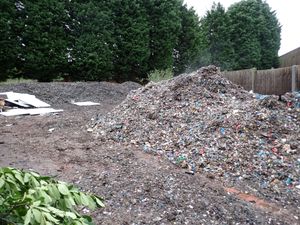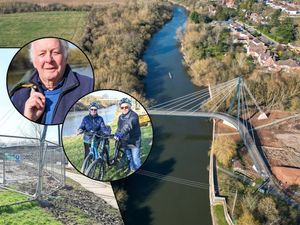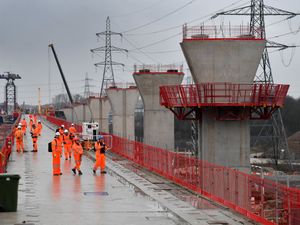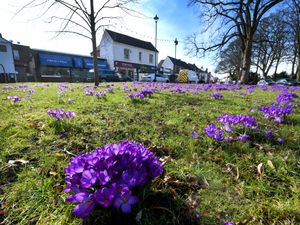'Eight weeks to save green belt' as region's future is mapped out
Help save the Black Country’s cherished green belt - that was the message today from council leaders ahead of the launch of a major consultation on the future of housebuilding in the region.
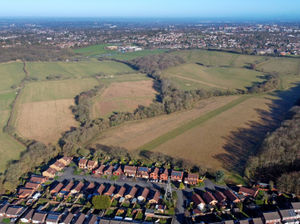
The consultation on the Black Country Plan opens on Monday and will last for eight weeks, giving residents the chance to have their say on where thousands of homes should be built over the next 15 years.
Key greenfield sites, like the Seven Cornfields on the Wolverhampton-Dudley border, North Canalside in Smethwick and Yieldsfield Farm in Bloxwich, are among those under threat from development
The Plan will be a major blueprint for future housebuilding in the Black Country.
It has been formed in response to growing demand for housing and pressure from the Government for councils to put forward land to be built on.
But leaders have warned a significant chunk of the green belt may have to be sacrificed in order to meet housing demands, something which has proved hugely controversial.
Officials now want as many people as possible to take part in the consultation and make their feelings known about the importance of protecting the green belt.
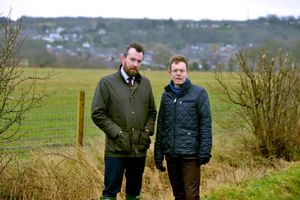
West Midlands Mayor Andy Street has been a vocal opponent of attempts to build the green belt and has insisted the Black Country’s housing targets can be met by building on previously developed sites.
Neighbouring areas, such as Staffordshire and Shropshire, have also come under pressure to ease the burden on the four Black Country boroughs by putting sites forward for development.
And Mr Street said: “We all know just how valuable green spaces are to the Black Country, and so we must not allow them to be surrendered for housing unless absolutely necessary.
“That’s why the upcoming consultation on the Black Country Local Plan is absolutely critical, and I would really urge residents to get involved and have their say to help protect the greenbelt.
Not enough land
More than 70,000 homes need to built in the Black Country by 2039 in order to keep up with rising demand and councils are now tasked with allocating sites to ensure that target can be met.
And some of the green belt will have to be churned up to make way for housing, officials have warned.
Any attempts to build on cherished countryside is always hard to swallow for locals and politicians but those behind the Black Country Plan insist there is no choice – there is simply not enough alternative land to build the tens of thousands of homes required.
West Midlands Mayor Andy Street does not agree with this assessment, however, and has insisted it is possible to deliver all the homes needed by building on brownfield sites, which are previously developed land such as derelict factories.
Council bosses say all brownfield sites suitable for redevelopment have been included in the existing land projections, with an estimate for how many homes they could take factored into the overall total required.
Council leaders say they are not supposed to influence the consultation process but almost all have gone on the record previously to say they oppose building on the green belt. Walsall Council leader Mike Bird is vehemently opposed to developing the green belt.
Residents are now being given eight weeks to have their say on the Black Country Plan and are being encouraged to do so if this is an issue they feel strongly about – although it is unclear what effect protests will have in reality.
A document explaining the Black Country Plan insists there is simply not enough land to spare the green belt completely. In fact, a 'green belt assessment' has already begun.
The document said: "Taking account of all of the brownfield land currently available, plus any other sites in the existing urban area, it appears that there is not enough land to meet all of the area’s needs. As a result, a green belt assessment has now been undertaken."
Surrounding, less densely populated authorities, such as Staffordshire and Shropshire, have come under pressure to help ease the burden but officials and residents there will be naturally reluctant to release land and do anything potentially threaten their rural way of life.
The document continued: "The Black Country does not have enough land to accommodate all of its future housing and employment land.
"Neighbouring local authorities such as South Staffordshire, Cannock Chase and Lichfield are currently reviewing their own local plans, to determine how much land they need to provide to meet their own housing and employment needs as well as potentially meeting the needs of the Black Country."
Any attempts to build on the green belt are likely to be met with a backlash from locals. Proposals to develop Seven Cornfields, on the Wolverhampton and Dudley border, sparked protests and residents are still hopeful of defeating the plans.
The four Black Country councils – Wolverhampton, Walsall, Dudley and Sandwell – are essentially working jointly on the strategy but there will be an expectation they all take a share of the burden.
It could prove difficult for a built up and densely populated borough such as Sandwell but that is part of the dilemma facing the authorities and the reason they are desperate for the neighbouring shire counties to help out.
A dossier seen by the Express & Star earmarked a raft of green belt sites in the Black Country that could potentially be put forward for future development.
Walsall Council leader Mike Bird has not been shy in stating his opposition to building on countryside land.
He also fears Walsall will be forced to take more homes than other areas due to its large green spaces on the borough's eastern edges.
He said: "I am totally opposed to building on the green belt. It's brownfield first as far I'm concerned.
"I have challenged ministers to show me their workings out. They are just showing the answers and that's the challenge I made when I met with them.
"I'm not convinced all these houses are required. Equally, I'm not convinced they can't be acquired on brownfield sites.
"If people don't get involved they could end up with the worst-case scenario."
Councillor Bird admitted he held some suspicions about the consultation process and whether the views of locals will be truly taken into account when it comes to deciding where homes are built.
He said: "I share some of that. I have asked the planning ministers what happens if we say no because it normally gets imposed on us.
"There are about 200 green belt sites in Walsall. We've got the most green belt in the area and we don't want it all in Walsall when other authorities like Shropshire aren't co-operating and could provide 3,000 houses.
"If it releases pressure on us I think we should continue to pursue that."
Mayor Andy Street said: "As Mayor I know the West Midlands has to meet its 215,000 homes by 2031 target, but I am determined we do that with a brownfield-first approach to housebuilding.
"That’s why I’ve commissioned an independent review into brownfield land in the Black Country to see if more land can be brought forward for housing and to help identify where more can be made of sites already earmarked for development. The findings of this review will be submitted as part of the public consultation.”
The consultation will run for eight weeks until October 11. It can be viewed at blackcountry.oc2.uk

